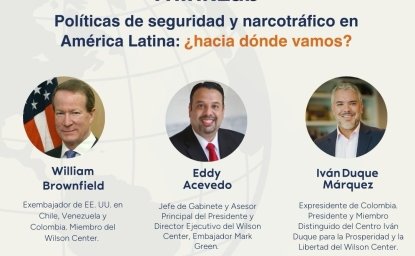President Obama's course corrections on his drone policy and Guantanamo Bay detainees are important. Though the use of drones has been far more judicious and careful than many believe -- I know from briefings I received as a member of Congress -- they have inflamed world opinion against the United States, especially in Muslim countries, and have served as a terrorist recruiting tool. So, too, the Gitmo facility -- a bad idea made considerably worse because the case-by-case exit ramp for prisoners now considered ready for release has been pulled up by the U.S. Congress. So, new constraints on drones and redoubled efforts to repatriate prisoners are overdue.
But the impact these changes have on the terror threat in the United States (and Britain, as we saw just this week) may disappoint. For one thing, though the president now says he may support drone courts, the use of drones remains extra-judicial. The executive branch is policing itself -- a scary proposition. For another, some in Congress remain implacable on Gitmo and the "indefinite preventive detention" nightmare may continue. Thus, both practices will still yield B-roll for Internet and live radicalization efforts.
And there is another reason: Even with welcome changes, the decade-plus of "U.S. wars," as well as culture wars, have fed a narrative that inspires alienated immigrants and bigots to self-radicalize right here on U.S. soil. Former CIA Director Michael Hayden calls this the "new normal": homegrown attacks by people legally here. These folks only have to be right once: To prevent them from acting, we have to be right every time. Impossible odds, though there are four things we can do to manage the risk better: 1.) intervene in the grey area between radical beliefs and violent behaviors; 2.) install redundant layers of security at both hard and soft critical targets; 3.) instill trust with communities where alienation is likely; and 4.) integrate a whole-of-government approach that embodies U.S. values.
Intervening in the Grey Area Between Beliefs and Behavior
The Constitution protects the expression of radical beliefs under the First Amendment. But when people are motivated by those beliefs to engage in violent acts, they commit crimes punishable by law. The challenge is to identify and intervene in the grey area between belief and action.
This was the point of the Violent Radicalization and Homegrown Terrorism Prevention Act, which I introduced in the House in 2007, and which passed twice by an overwhelming bipartisan vote. The cornerstone of the bill was a commission intended to study the problem of radicalization and how certain beliefs incite someone to commit violence, as well as to ensure that profiling would be based not on race or religion but behavior. Sadly, a misguided view over privacy concerns by the civil liberties community blew up the bill when it hit the Senate. Today, we're left with fewer tools than we need to stop the next homegrown plot.
If revisited, a Homegrown Terror Commission could compile a list of lessons-learned from large, well-funded police departments like the NYPD or LAPD (where the concept of suspicious activity reporting began) as well as the Department of Homeland Security's "See Something, Say Something" campaign. And it could study the language and tactics used by al Qaeda's Inspire magazine -- which was found on the computer of accused Boston bomber Tamerlan Tsarnaev's widow -- to recruit terrorists and incite violence.
The findings from such a commission would improve effectiveness of existing tools, too. In 2007, Congress created the Interagency Threat Assessment and Coordination Group at the National Counterterrorism Center. The ITAC-G is a team made up of firefighters, state and local police, tribal representatives, and emergency medical personnel that analyzes and interprets intelligence that could be useful to frontline personnel.
For example, when local police found ricin in a Las Vegas hotel room in 2008, the ITAC-G explained how to identify it to police departments across the country. ITAC-G could also benefit from clear guidelines about suspicious behavior by incorporating trends into threat alerts.
Canada has dedicated $10 million to the Kanishka Project, named after the Air India plane that was bombed in 1985, killing hundreds of Canadian citizens. Research supported by the project will increase Canada's understanding of the recruitment methods and tactics of terrorists, which will help that country produce more effective policies, tools, and resources for law enforcement. Why can't we do the same?
Install Redundant Layers of Security
Airports and seaports employ multiple layers of security, some obvious to the naked eye and some covert -- think metal detectors, bomb-sniffing dogs, restricted areas, databases, etc. These layers provide redundancy in the event that one system fails. But we also need more robust security at softer targets like subway stations, hotels, public sporting events, and schools. Passive measures like access control, perimeter monitoring, and random security checks are sometimes all that's necessary to deter a would-be terrorist.
The Boston bombing demonstrated that video surveillance in the "public square" -- around prominent buildings and at marathon finish lines, for example -- must also be expanded. So-called "closed circuit TV" camera footage can be reviewed in real time or after an attack to help local law enforcement identify unusual or suspicious activity. The 2005 subway and bus bombers in London were quickly captured because of video surveillance.
Instilling Trust with Communities
Homegrown terrorists are not all Muslim. They have been affiliated with those on the far right (pro-gun, anti-abortion, pro-Nazi, or anti-Muslim) or far left (animal rights or pro-environment activists).
Some police and sheriff's departments successfully developed key relationships within Muslim and other minority communities even before 9/11 -- and already have longstanding relationships with other key community leaders. FBI field offices did the same after 2001.
But we need to be proactive rather than reactive. How are we working with community groups to understand and identify the anti-abortion fanatic who plots to bomb the next sporting event, as Eric Rudolph did at the Atlanta Olympics? What are lessons from other countries with growing Muslim populations (think France, which recently arrested three Chechens) that have done this well?
Implementing a Whole-of-Government Strategy
David Petraeus has said in relation to Afghanistan, "We can't kill or capture our way out of an industrial-strength insurgency." The same applies to the homegrown terror threat: We have to be creative and employ non-kinetic tools if we are to have any hope of succeeding. Brute force -- and bending the law to its limits -- won't help us find the kid in a basement, radicalized by an Internet connection.
What does a whole-of-government strategy look like? To start, it requires leadership at the top. The president must use his bully pulpit to articulate our values and interests. A positive narrative about what America stands for can help counter hateful propaganda that often attracts and radicalizes disaffected kids, whether in Yemen or Cambridge, Massachusetts. We do this by living our values -- not by inflaming the hatred of people we need to persuade by conducting so-called signature drone strikes and operating a prison that has no exit. Thursday's announcement by the president about reining in our counterterrorism tactics is a good start.
He must also demand agility from bureaucracies, and he must encourage the Department of Homeland Security, the Department of Justice, the Office of the Director of National Intelligence, and other key agencies to be creative about their approaches to mitigating this threat, and work more closely with state and local governments before key holidays. Communication is key. Congressional hearings revealed that the FBI did not tell the Boston Police Department that Tamerlan Tsarnaev was on a terrorist watch list. Had it done so, Boston PD might have been able to intercede earlier.
There's a role for businesspeople, too, as the owners and operators of infrastructure that may be targeted by terrorists -- and that we need to make more resilient. If something is suspicious -- like the purchase of a large order of chemicals or fertilizer -- businesses will know first.
Security and liberty are not a zero-sum game. We either get more or less of both. It is a testament to our resilience that, 12 years after the September 11 attacks, a new Time/CNN poll finds that only four in 10 Americans say they are willing to give up more civil liberties to fight terrorism in the aftermath of the Boston bombing.
Since 9/11, we've thwarted over 50 homegrown terrorists and missed only four homegrown attacks. Curtailing tactics that inflame alienated populations, while enhancing techniques that help us find those among us who are radicalized, gives us far better odds of reducing risk.
This article originally appeared in Foreign Policy.





